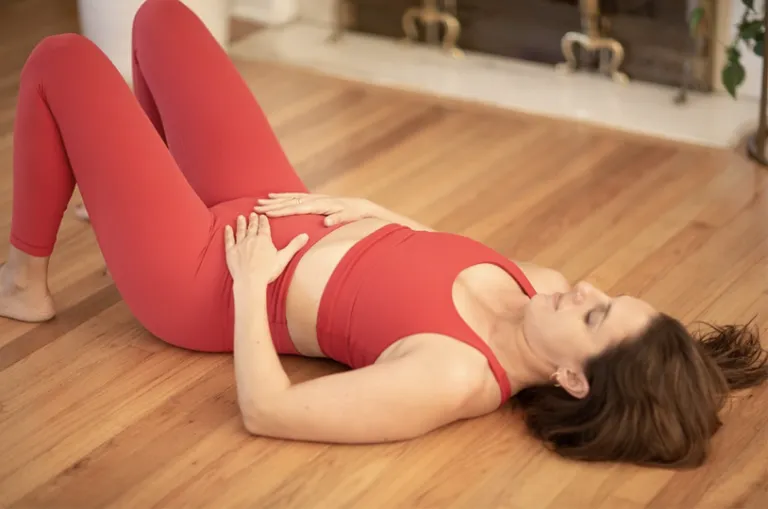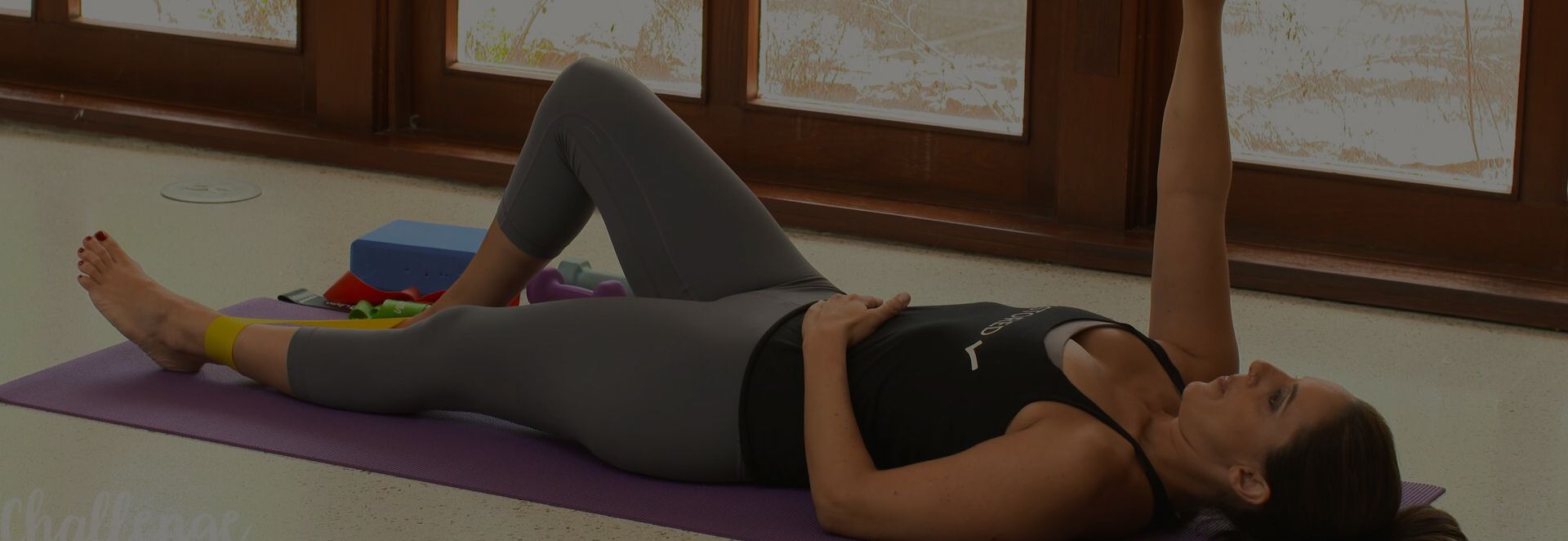Resources
- Breathing and Diastasis Recti: Understanding the Connection and Finding Relief
- Can You Have a Flat Stomach with Diastasis Recti?
- Ab Exercises for Diastasis Recti That Heal, Not Harm
- Can Diastasis Recti Be Fixed Without Surgery?
- Working Out with Diastasis Recti
- How to Fix Diastasis Recti Years Later: A Comprehensive Guide for Long-Term Healing
- Is Diastasis Recti Preventable? | 5 Ways To Prevent Rectus Diastasis
- Can Diastasis Recti Be Fixed Without Surgery?
- Diastasis Recti During Pregnancy
- Before and After: Diastasis Recti
- Can You Fix Diastasis Recti? Exercise Or Surgery
- What Does Diastasis Recti Look Like?
- Self Testing Diastasis Recti | 4 Simple Ways to Test Yourself
- Diastasis Recti Exercises | 8 Exercises for Rectus Diastasis
- Diastasis Recti Exercises For Men
- Diastasis Recti Surgery | Procedure Overview | Will You Need It?
- Is Diastasis Recti Fixable? | Exercise or Surgery
- Diastasis Recti Symptoms | Stomach, Back Pain, Pelvic Floor Issues

in this FREE video and get the support you deserve
*No spam, just quality
content and support
Resources
- Breathing and Diastasis Recti: Understanding the Connection and Finding Relief
- Can You Have a Flat Stomach with Diastasis Recti?
- Ab Exercises for Diastasis Recti That Heal, Not Harm
- Can Diastasis Recti Be Fixed Without Surgery?
- Working Out with Diastasis Recti
- How to Fix Diastasis Recti Years Later: A Comprehensive Guide for Long-Term Healing
- Is Diastasis Recti Preventable? | 5 Ways To Prevent Rectus Diastasis
- Can Diastasis Recti Be Fixed Without Surgery?
- Diastasis Recti During Pregnancy
- Before and After: Diastasis Recti
- Can You Fix Diastasis Recti? Exercise Or Surgery
- What Does Diastasis Recti Look Like?
- Self Testing Diastasis Recti | 4 Simple Ways to Test Yourself
- Diastasis Recti Exercises | 8 Exercises for Rectus Diastasis
- Diastasis Recti Exercises For Men
- Diastasis Recti Surgery | Procedure Overview | Will You Need It?
- Is Diastasis Recti Fixable? | Exercise or Surgery
- Diastasis Recti Symptoms | Stomach, Back Pain, Pelvic Floor Issues
How to Choose the Best Diastasis Recti Program?
By Lauren Ohayon 05/30/2024
5 Min Read
While it’s relatively easy to assess yourself for diastasis recti, what do you do about it? PT is great; pressing play on a video at home is even easier. Read on to better understand how to choose a diastasis recti recovery program that aligns with your unique needs, preferences, and goals.
Table of Contents
Diastasis Recti (DR) and You
Diastasis recti is the thinning of the linea alba connective tissue that links the two sides of the rectus abdominis muscles. While DR is commonly associated with pregnancy, it can affect athletes and people who have never been pregnant. For many, the change in body shape created by DR can affect their self-esteem; the most bothersome aspect of diastasis recti is the impact on core function.
A functional core isn’t about having a flat belly or a “six-pack.” It’s about being able to do the things you want with minimal pain and difficulty. One of the things that I’ve noticed in my many years of working with people with diastasis recti is that it’s the loss of ability that gets in the way of their joy. You want to be able to pick up your kid, dash down the street, or take a walk with a friend without back pain. But diastasis recti can put a stop to all of that.
The good news is that diastasis recti responds incredibly well to treatment: Physical therapy and targeted exercises are very effective and are the first-line treatment. If, after a year of regular practice, you’re still dealing with symptoms and your DR has not decreased in depth or width, then surgical repair options are available. But many people find that spending a year tending to their core function has benefits that are life-long, even if surgery is required.

How to Choose the Best Diastasis Recti Program
It doesn’t usually take a full year to begin seeing the results of a diastasis recti workout program. The best exercise programs for diastasis recti take a whole-body approach that will have you feeling some changes in as little as 12 weeks. Here’s how to spot a quality program:
1. The Program’s Approach and Philosophy
All diastasis recti exercise programs will target the abdominal muscles in some way. But in order to regain full function of the core, you need to look at the body as a whole. Some of the best programs targeting diastasis recti will incorporate mindfulness or yoga to help you connect with your body. Others will be more strength-training oriented but still taking a whole-body approach. Your core does not exist in a vacuum. Why target it as if it does?
- Look for these kinds of words:
- Whole body
- Holistic
- Functional
- Strength
- Responsive
All of these words are about function, not form. Avoid programs that promise a “flat belly.” Not only is a flat belly unattainable for most people, but it’s also false advertising.
2. Qualifications of the Creator/Instructor
The program creator/instructor should be well-versed in the anatomy and mechanics of core function. They may have begun their career in yoga or strength training, or perhaps they’re a PT or OT. What matters is that they’ve continued their education as they’ve developed their program. Look at their bio: can you see evidence of their ongoing learning and development? If they have a YouTube or other social media presence, look at how they explain the concepts they’re teaching. They should be able to distill complex ideas like “intra-abdominal pressure” in a way that’s easy to understand.
3. Program Structure, Duration, Intensity Levels
The best program for diastasis recti is the program you’ll actually complete. That means the program should have a clear structure. There should be stages and clear indicators of when to move on: as you continue your healing journey, your strength and coordination will increase. The program you follow should scaffold those increases in strength, allowing you to do more in your everyday life as you progress through the program. For those of you who are athletes, you may find that the initial stages of a program like Restore Your Core® seem “too easy.” You will want to focus on moving more mindfully, with more attention to how you’re moving vs. how fast or hard you’re moving. Even the smallest movements can be challenging when you practice moving with precision.
4. Customization and Flexibility
One of the things I’ve heard for years is, “I just don’t have an hour to spend on myself.” That’s why the best exercise program for diastasis recti healing has plenty of options to customize your workouts. I don’t just mean the duration of your workouts; I mean adapting your workouts to suit your ability and time. The program you choose should have routines of different lengths to suit different days and, ideally, will have options that meet you where you are ability-wise. If getting up and down from the floor is difficult, a standing series of classes will be more appropriate and can be easily turned into a seated practice. If the program creator operates from the assumption that everyone has 45 minutes to an hour to spend working out, they aren’t living in the real world.
5. Exercise Variety and Focus
As with point 4, having a variety of exercises and focuses is essential to an effective core rehab program. This isn’t about avoiding boredom: Your body thrives on variety and novelty and will adapt quickly to repeating the same exercises for several weeks. Exercises that address the many factors that influence how well you move overall will increase your core function in a way that isn’t available to you if you spend 12 weeks doing crunches. Think about it like this: do you spend all day doing crunches, or do you need to bend, walk, reach, carry? The best programs will help you do those things better.
Another aspect I want to mention here is that the focus should not only be on getting stronger–the focus should be on developing a better relationship with your body. So that may mean that the best program includes slower movements or practices designed to help your nervous system heal and reset, like meditation or resting positions. Strengthening your core is about more than building muscle; it’s also about increasing flexibility, learning to coordinate the breath and core, and seeing your whole body as your home.
6. Support and Community, Access to Instructors
Have you taken an online course only to find that the course creator isn’t actively supporting you as you progress through it? What happens when you have a question that’s not answered in the course FAQ? Make sure that the program you choose includes support from actual human beings, including instructors trained in the method used. One of the strongest ways we heal is in community. Just knowing that other people have been through the same experiences and gotten the results they want can be incredibly helpful. Being able to ask questions, post videos, or get 1-1 feedback and instruction is priceless. Bodies are all different, and while the very best programs for healing diastasis recti are full of information that may help you work better with your body, there’s nothing like being able to ask about your particular issue and get a human response.
7. Educational Content
Bodies are all different, but there are common patterns that show up over and over again in bodies with diastasis recti. The program you choose should include ample educational content outside of the exercises themselves. Diastasis recti is a whole-body issue, and a program that educates you on the patterns involved will give you better long-term results. The best programs will help you troubleshoot concerns that are popping up as you move through the exercises and will help you move better off the mat, too. So, yes, a program that moves you progressively through a variety of exercises is helpful. Even more helpful is a program that helps you solve problems you didn’t even know you could solve–like tight hips, shoulder mobility, pelvic floor tension, and more. It’s all connected, and the best diastasis recti exercise programs teach you how and why.
8. Success Stories and Testimonials
You should look for success stories and testimonials about the program you’re using–but don’t just look at the words. Do people provide photos? First and last names? Is there a way to connect with other people who have already gone through the program and hear their feedback? These are all questions you can ask yourself as you look at the sales material of any program you’re considering buying.
9. Accessibility and Ease of Use
Is the program easy to access, no matter what device you’re using? If it’s only available as a mobile app, is it easy to broadcast to other devices? What about other access needs you may have? Are captions and/or handouts available? If you can’t find answers to these questions easily, you may want to steer clear. A further consideration for some folks may be whether the program itself feels inclusive. Do you feel like your identity will be comfortable in the virtual environment that the instructor is creating? What kind of language does the instructor use to talk about bodies? Check out the creator’s social media, if possible. If you don’t feel welcome, you won’t use the program.
10. Cost and Value Proposition
Finally, you should consider what you’re getting for your money: the program length and additional educational material, plus how long you’ll have access to the program materials. If someone offers “lifetime” access, you should be aware that this is for the lifetime of the program/company, not your personal lifetime. But a cheaper program offering only 3 months of access may not be your best bet. It’s better to think of your diastasis recti journey as a long-term process, not a quick fix. The way to measure the value of a program is to examine what it offers over the long term–will you feel better in your body if you complete it? Will you have tools that you can integrate into other activities beyond the scope of the program? Then you’re getting a good deal.

Key Factors to Consider When Choosing the Best Program For Diastasis Recti
You know your body best. You should take into account:
- How much time you have (how long are the workouts?)
- The program’s focus (yoga, strength training, something in between?)
- How committed you are to working with the program
- Your budget
It’s important to take an informed approach to selecting a program that best suits your individual needs and goals. The best diastasis recti exercise program will be focused on healing core and pelvic floor dysfunction (it’s all connected!), have a trauma-aware lens, and will not over-promise. You can heal from diastasis recti, but it takes time and consistent effort. Ideally, any program you buy will make the process feel easier and more achievable.
Of course Restore Your Core® is designed with all of the above in mind and we have had 10s of thousands of people choose us for their diastasis recti healing journey.
Here’s a look at what’s inside:

FAQ
1. What are the key benefits of a specialized diastasis recti program?
A specialized diastasis recti program can improve core strength, reduce abdominal separation, and alleviate related symptoms.
2. Can diastasis recti programs be followed at home?
Yes, diastasis recti programs can be effectively followed at home with proper guidance and instruction. Of course, you should check with your physician before beginning any exercise program.
3. How long does it typically take to see results from a diastasis recti program?
Results from a diastasis recti program typically start to show within a few weeks to a few months, depending on individual factors (such as the width and depth of the separation) and consistency.
4. Can a diastasis recti program help with postpartum recovery?
Yes, a diastasis recti program can significantly aid in postpartum recovery by addressing core weakness and abdominal separation.
5. How do I stay motivated during a diastasis recti program?
Staying motivated during a diastasis recti program requires setting realistic goals, tracking your progress, and finding support from peers or professionals, such as the instructor of your program.
6. Is it possible to heal diastasis recti with a good diastasis recti program?
Yes, healing diastasis recti is possible with a well-designed and consistent diastasis recti program tailored to individual needs.
 Registration closing for
Registration closing for 


